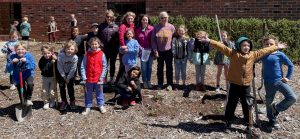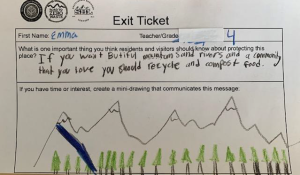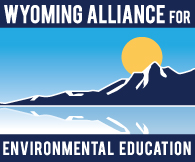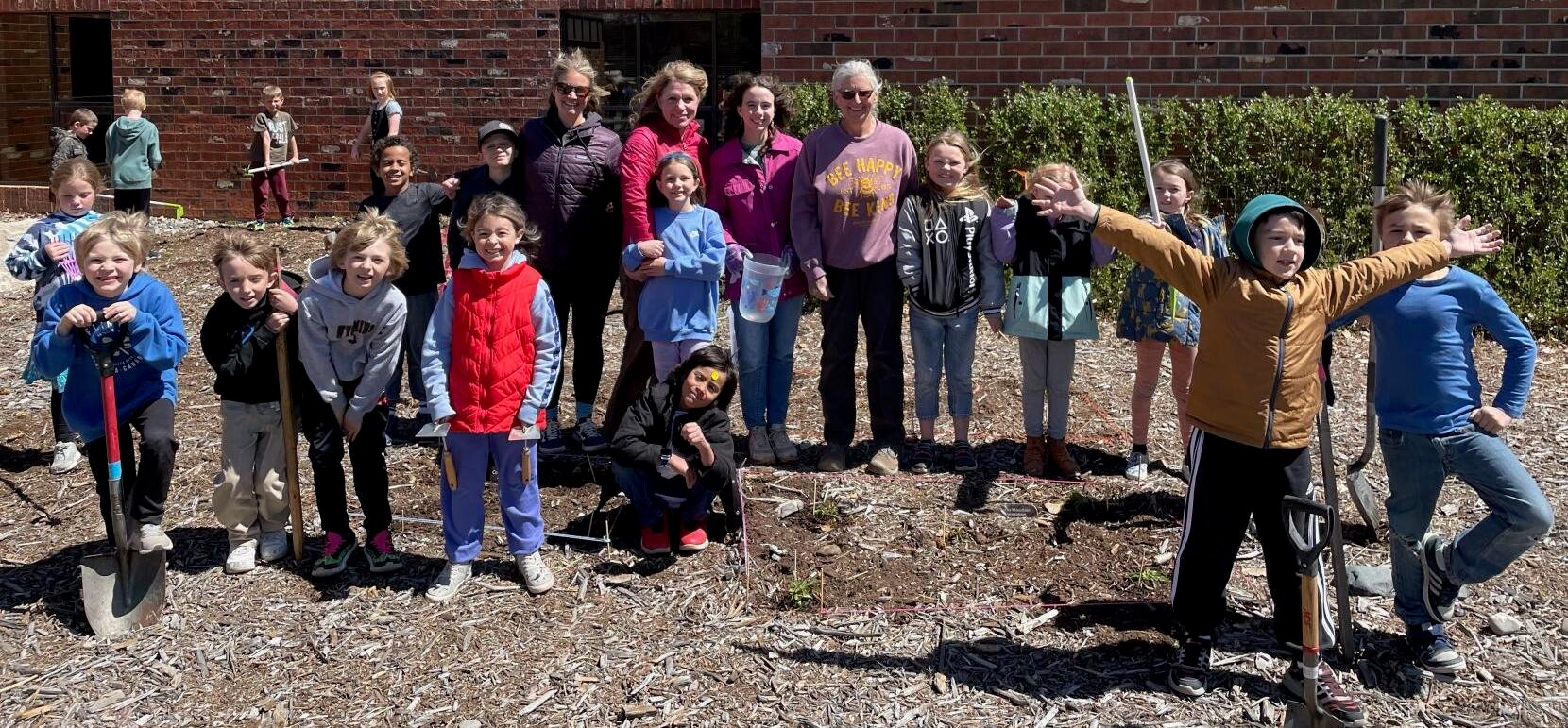In 2022-24 WyAEE was part of a collaboration that received an EPA grant to support environmental education in the mountain region. Our partners were the Colorado Alliance for EE, the Montana EE Association, and the Utah Society for EE. The grant supported each organization in initiating online eeCourses. Courses were piloted in late fall and early winter 2023-24. Participants who completed their course qualified to apply for a small sub-award to finance a project in which the applicants applied what they had learned in their course. Two projects in Wyoming were funded by the sub-awards:
Project No. 1
Olivia Bergeron of the Cody Conservation District completed the course “Teaching & Learning in the Outdoors.” She used her knowledge in a project to plant a pollinator garden with students and teachers at Livingston Elementary School in Cody. Inspired by their recent unit on pollinators, the students expressed an interest in supporting bees and other pollinators. With guidance from CCD staff, including the horticulturist, the students learned essential gardening skills while nurturing the garden into a thriving habitat for pollinators.
The project provided hands-on outdoor learning experiences while fostering a sense of responsibility, cooperation, and stewardship among the students. The CCD staff taught lessons on native bees and butterflies to educate students on the importance of pollinators. They advised students on plant placement and the benefits of the plants selected. Sixteen students from the second-grade class took the lead in the project, with thirty more students participating in outdoor learning events.

Courtesy photo
The garden serves as an educational resource for the entire school, promoting biodiversity awareness and highlighting the importance of native plants and pollinators in supporting local ecosystems. The garden also provides students, including those living in apartments and temporary housing, an opportunity to experience the joys of gardening firsthand.
Through this project, students not only had a fantastic time but also acquired knowledge about garden planning and the value of drought-resistant native plants. Students became familiar with the basics of maintaining a garden and gained valuable gardening skills.
The garden has transformed the schoolyard into a habitat for pollinators, and the connections the CCD made at the school will be a wonderful resource for teaching students for years to come. The teachers have already invited the CCD staff to present a lesson to next year’s second graders in the fall. The garden will serve as an outdoor classroom for exploring additional topics such as insect biology, plant life cycles, soil health, and more. By integrating hands-on experiences with
curriculum-based learning, the CCD and Livingston Elementary School teachers will inspire a deeper appreciation for nature and foster environmental consciousness among students.
Project No. 2
Shannon Shuptrine, executive director of the Riverwind Foundation, completed the eeCourse “Climate Change Literacy.” The Riverwind Foundation engages local schools and students in learning about a) waste reduction and The Road to Zero Waste, b) Jackson’s plastic bag ban, and c) environmental sustainability in local businesses. For their EPA-funded project, Riverwind partnered with Teton Co. Integrated Solid Waste and Recycling (ISWR) staff to work with elementary students in Teton County. They offered hands-on workshops, interactive sessions, and collaborative art projects that gave students the knowledge and skills needed to make informed decisions.
Riverwind and ISWR staff visited classrooms and provided a 90-min lesson, after which teachers and students were invited to the Recycling Center for more reinforcement and learning. After the Recycling Center visit, Riverwind and ISWR followed up with a mini-lesson on climate literacy and greenhouse gas accumulation, specifically methane. They then discussed the county-wide goal of 60% reduction in waste by 2030 and had the students play recycling and composting games to practice waste diversion. Food waste in landfills is a big contributor to methane gas production. The students practiced diverting recyclables and compostables from the waste stream and learned that they can recycle things like books, batteries, bike tires, and textiles.
 Each classroom was left with a compost bucket and a Sustainability Code of Conduct poster, created by local students. Students gave the presenters “exit tickets”—reflections about what they think is most important to know about protecting their place.
Each classroom was left with a compost bucket and a Sustainability Code of Conduct poster, created by local students. Students gave the presenters “exit tickets”—reflections about what they think is most important to know about protecting their place.
Another element of the project involved The Sustainable Business Leaders (SBL) Program, a membership-based association managed by ISWR with support from the Riverwind Foundation. Part of Riverwind’s EPA sub-award was used to connect students to the SBL Program where students could participate as a “Jr. Hotshot.” The students now know about the Sustainable Business Leaders in their community, and they understand everyone can take personal action around waste stream diversion.
As part of the project, Shannon Shuptrine mentored a middle school student who did a semester-long project on the SBL Program for her sustainability class. She gave two successful public presentations that taught other young people and adults about The Sustainable Business Leaders Program. She also recruited two new businesses for the program. Climate literacy was the basis of her research project on the impact small businesses can make with waste and energy reduction.

